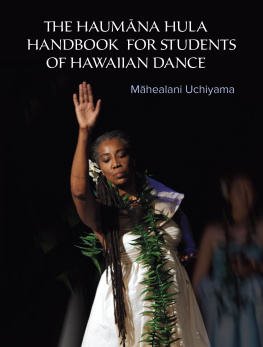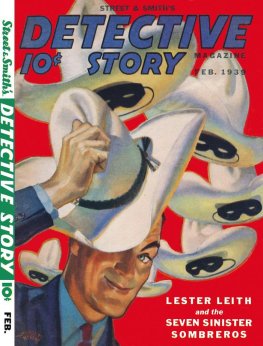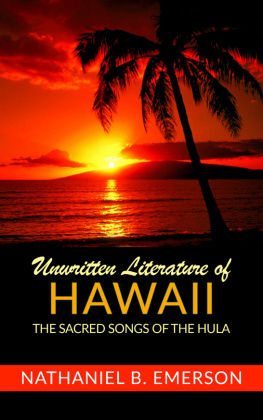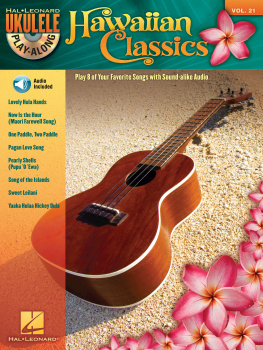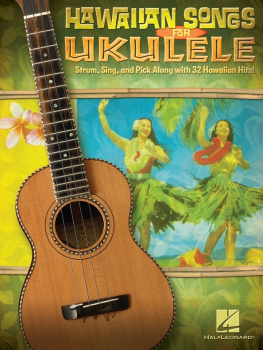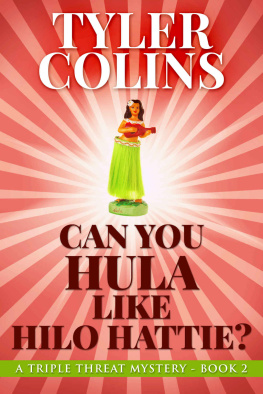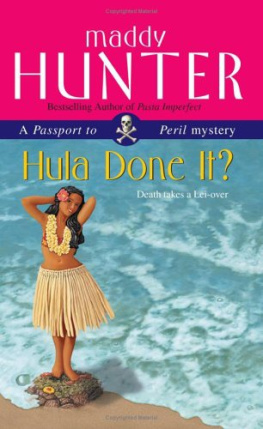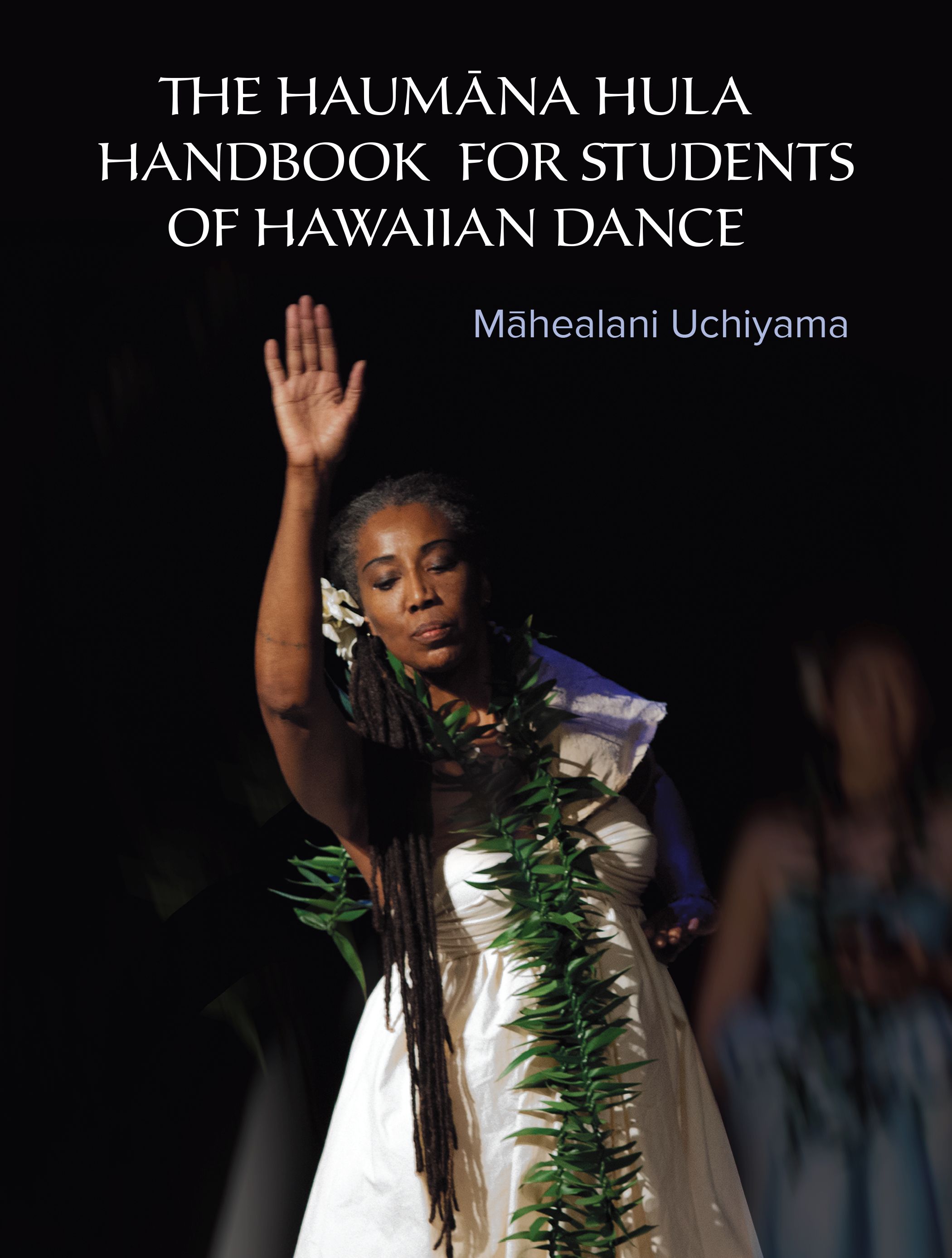THE HAUMNA HULA HANDBOOK FOR STUDENTS OF HAWAIIAN DANCE
M HEALANI U CHIYAMA

North Atlantic Books
Berkeley, California
Copyright 2016 by Mhealani Uchiyama. All rights reserved. No portion of this book, except for brief review, may be reproduced, stored in a retrieval system, or transmitted in any form or by any meanselectronic, mechanical, photocopying, recording, or otherwisewithout the written permission of the publisher. For information contact North Atlantic Books.
Published by
North Atlantic Books
Berkeley, California
Cover design by Dan Tesser
Cover photo by Peter Jew, peterjayarts.com
Photography credits are printed on in this book. If you are the photographer or have information on how to contact them, please contact North Atlantic Books.
The Haumna Hula Handbook for Students of Hawaiian Dance is sponsored and published by the Society for the Study of Native Arts and Sciences (dba North Atlantic Books), an educational nonprofit based in Berkeley, California, that collaborates with partners to develop cross-cultural perspectives, nurture holistic views of art, science, the humanities, and healing, and seed personal and global transformation by publishing work on the relationship of body, spirit, and nature.
North Atlantic Books publications are available through most bookstores. For further information, visit our website at www.northatlanticbooks.com or call 800-733-3000.
Library of Congress Cataloging-in-Publication Data
Names: Uchiyama, Mahealani, author.
Title: The Haumana hula handbook : a manual for the student of Hawaiian dance
/ Mahealani Uchiyama.
Description: Berkeley, California : North Atlantic Books, 2016.
Identifiers: LCCN 2016014084 (print) | LCCN 2016015913 (ebook) | ISBN
9781623170554 (paperback) | ISBN 9781623170561 (Ebook)
Subjects: LCSH: Hula (Dance) | DanceHawaii. | BISAC: PERFORMING ARTS /
Dance / Folk. | PERFORMING ARTS / Dance / Reference.
Classification: LCC GV1796.H8 U34 2016 (print) | LCC GV1796.H8 (ebook) | DDC
793.319969dc23
LC record available at https://lccn.loc.gov/2016014084
HOOLAA PALAPALA
Dedication
HE INOA NO KAMOHAI
In the Name of Kamohai
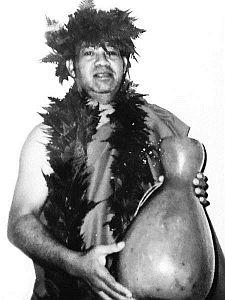
JOSEPH KAMOHAI KAHULELIO is of the IlalaolePukui hula genealogy, having studied hula under Henry Pa, Emma Bishop, Lokalia Montgomery (where as a student he was introduced to his hula sister Miki Aiu), Mary Kawena Pukui, and Iolani Luahine.
Uncle Joe was my Kumu Hula. Ironically, I first met him after I moved to Northern California from Honolulu in the early eighties. He was living in Hayward, where he taught hula as well as Tahitian ori and Mori waiata ringa. I joined his company, Kamos of Hawaii/Fetia O Tahiti, which performed throughout Northern California. I was fortunate indeed to have the opportunity to study and perform with one of the recognized hula greats of all of time. That time, unfortunately, was all too short. He returned to Hawaii in 1984 to recover his health. By the next year he was gone.
This book is dedicated to Uncle Joe. His numerous students were of all nationalities. He generously taught love of Hawaiian culture through the language of dance.
CONTENTS
Acknowledgments
I OFFER HEARTFELT thanks to my hula teachers: Maile Baker, who first set my feet on the path of learning hula; Miki Aiu, who lovingly introduced me to the methodology of studying the dance; Hooulu Cambra who, while patiently reinforcing Auntie Mikis teaching, taught me how to chant and drum; and Joseph Kamohai Kahulelio for his generous heart. I thank and honor my dear friend and hula brother Walter Kaleialoha Laymance who introduced me to the experience of picking fresh maile high in the uplands of Mokulia. Walter, I loved and admired your Hawaiian soul and I will always remember you. I offer deep appreciation to my Kahu Edward Kealanahele, for his spiritual guidance. I gratefully recognize the contributions of the State Council on Hawaiian Heritage which in the 1970s offered the opportunity for myself and others to take workshops with master teachers such as Pele Suganuma, Hoakalei Kamauu, and Edith Kealanahele. I was fortunate to also have the opportunity to partake in additional hula and chant workshops with Kumu George Naope that were sponsored by my kumu Uncle Joe. To these and the many renowned kumu who have generously shared their ike (knowledge) through workshops and special events over the years, mahalo nui!
In addition, I wish to acknowledge the generosity, integrity, and foresight of the founders of Kaaha Hula O Hlauaola World Hula Conferences, n kumu Pualani Kanakaole Kanahele, Hklani Holt and Leinaala Kalama-Heine. They, along with Kumu Kehaulani Kekua, have provided a unique means for hula practitioners to gather and deepen their understanding of hula through this quadrennial event. I recognize with gratitude the amazing insight on Pelehnuamea which has been shared with the community by members of the Edith Kanakaole Foundation. I am inspired by their wisdom and generosity in conveying the universality of this powerful narrative.
My understanding of hula is largely dependent on lelo Hawaii, the Hawaiian language. Deepest appreciation to my kumu lelo Hawaii: Kalena Silva, Sarah Nakoa, Pua Anthony, and Larry Kauanoe Kimura. And thanks also to Puakea Nogelmeier for being willing to soothe my translation anxieties, always with extreme kindness and patience. I acknowledge the contributions of my esteemed instructors of dance ethnology and ethnomusicology at the University of Hawaii, especially Judy Van Zile, Ricardo Trumillios and Barbara Smith.
The San Francisco Bay Area is the point of convergence of a wonderful community of culture bearers, and my experience has been defined by exposure to their good endeavors. I humbly acknowledge the work of n kumu hula (hula teachers) Patrick Makuakne and his Hlau N Lei Hulu I Ka Wkiu, Mark Kealii Hoomalu and his Academy of Hawaiian Arts, as well as the Ehulani Lum, her daughter Deanie Villiados, and their Kumu Hula Association of Northern California, which continues to foster a dynamic environment for the perpetuation of Hawaiian performing arts in the San Francisco Bay Area. Similarly, I honor World Arts West, the producers of the renowned San Francisco Ethnic Dance Festival for their work in championing an environment in which cultures gather to celebrate their own unique heritages while honoring those of others.
Love always to my hula brother Kumu Kawika Keikialii Alfiche for his support over many years and the deep integrity and artistry expressed in his Hlau o Keikialii. Our kaiaulu (community) is further blessed by the efforts of Hk Hanohano Award-winner Patrick Landeza for his Berkeley Hawaiian Music Festival, and of Saichi Kawahara and his organization, Kapalakiko I Ke Aloha. Their tireless efforts enhance the appreciation for and raise the standard of Hawaiian music in the Bay Area.
Mahalo to Pam Mei Kawehiokekuahiwi Graybeal, Elaine Malino Mo, Maria Kalaulehua Recht, Amy Ilikea Wehiwa Santana, Mariko Soto, and Ken Iolaka Swan, for their generous contributions to the various iterations of this manuscript over the years. Deep appreciation to renowned artist Linda Rowell Stevens who graciously granted me permission to use her beautiful artwork to illustrate this book. To Doug Reil, Hisae Matsuda, and all of the staff of North Atlantic Books, mahalo for the faith and support you have afforded me during the process of re-visioning and recreating this book. Mahalo to Selina Iolani Lewis for connecting us together.

